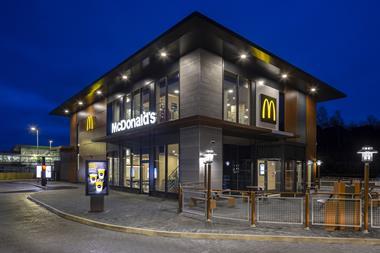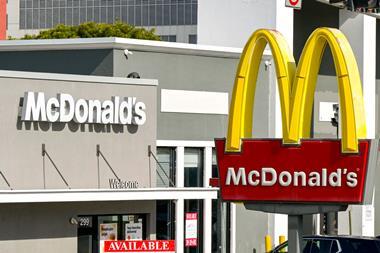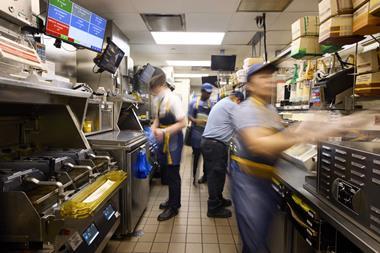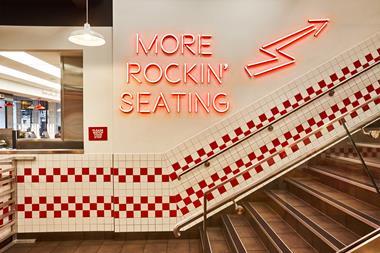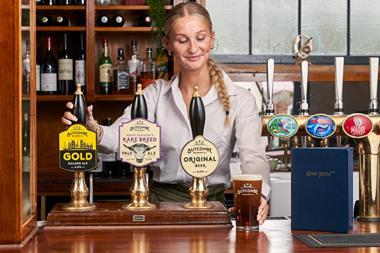Darren Tristano, of Technomic, explains why offering morning options throughout the day is easy win for restaurateurs
Breakfast is one meal most often skipped or consumed at home in the US but, for these reasons, the morning meal also presents opportunity for restaurant operators, according to Technomic’s latest U.S.
Breakfast Consumer Trend Report. Many concepts that already offer breakfast are expanding it into other day parts to increase traffic and draw new customers, while others are incorporating breakfast or brunch items into their menus. Their timing is strategic as diners are growing more interested in breakfast options at all times of the day, with particular interest in items with health-halo attributes, non-meat offerings, breakfast beverages and ethnic flavours, according to data and insights taken from the report.
Expanding all-day breakfast
After years of consumer requests, McDonald’s finally delivered this year on the idea of offering its breakfast menu all day. In the few months since the move, the chain is already seeing improvements in sales. McDonald’s US president Mike Andres estimates that sales from its English muffin-based line of sandwiches may help boost the chain’s sales by 2.5% per year. Fellow burger chain White Castle also began offering all-day breakfast, even earlier in the year than McDonald’s. Other major quick-service restaurants, including Jack in the Box, Bojangles’ Famous Chicken ’N Biscuits and Sonic are also serving all-day breakfast and expanding hours and menus for breakfast items. Also in 2015, Taco Bell rolled out its own breakfast menu featuring egg and meat burritos and biscuit tacos. Full-service restaurants (FSR) are also getting in on the action by adding brunch items to their menus. Golden Corral tested all-day breakfast for a limited time and offered its weekend brunch menu during lunch and dinner hours.
These steps align with consumers’ interest in breakfast foods at any time of the day. According to the report, diners are increasingly eating breakfast food at non-traditional times; 54% of consumers, up from 48% in 2013, say they enjoy breakfast foods like pancakes and eggs for dinner or late-night meals.
Operators who tailor to a younger crowd have an even greater opportunity to capitalise on what some consider the most important meal of the day. Younger consumers are even more likely than their older counterparts to look for breakfast foods at non-traditional times. Younger diners also generally rely more heavily on foodservice, and are more likely to snack. Breakfast items such as fruit and yoghurt parfaits and handheld breakfast burritos make for filling snacks to keep patrons satisfied until their next meal.
Snacking occasions could become increasingly important for breakfast fare, particularly at concepts that don’t offer all-day breakfast. While all-day breakfast items could potentially cannibalise other lunch and dinner dishes with their lower price points, these menus are highly unlikely to reduce overall traffic and may even help drive traffic. Unique and craveable breakfast items can still benefit operators that opt not to offer all-day breakfast by capturing more snacking occasions as well as drawing new customers looking for these innovative items.
Responsible sourcing
When sourced away from home, breakfast is about speed and convenience but research shows consumers aren’t willing to sacrifice on quality, an attribute becoming even more crucial for weekday-morning meals. In general, the majority of consumers say they would be more likely to order made-from-scratch breakfast items (78%), “real” breakfast items (77%), all-natural breakfast items (60%) and breakfast items free of artificial ingredients (64%). Satisfying these customer tastes will be particularly important at limited-service restaurants (LSR) that are currently catching up with their full-service counterparts in using higher-quality breakfast ingredients with health-halo attributes. Menu call-outs of made-from-scratch breakfast mains have increased 40% on LSR menus during the past two years. And more of these restaurants are using real butter in place of margarine; butter mentions increased 3% overall on LSR breakfast menus since 2013.
With sourcing at the forefront in the minds of many consumers, more restaurants are highlighting their use of cage-free eggs, gestation crate-free pork and grass-fed beef; 47% of consumers say they would be more likely to order cage-free eggs or poultry items. Breakfast menu mentions of cage-free eggs have grown 40% since 2013, and that number is expected to rise: Taco Bell, Dunkin’ Donuts, Caribou Coffee and Panera Bread are just some of the brands that have recently announced plans to increase their percentage of cage-free eggs or serve them exclusively. Also, McDonald’s has rolled out plans to transition to 100% cage-free eggs during the next 10 years at all North American locations and is no longer using liquid margarine to cook its breakfast items, instead using real butter. Bob Evans launched menu changes in recent months that included shell-cracked eggs instead of a liquid egg product, butter instead of margarine on biscuits, and new not-from-concentrate orange juice.
Along with highlighting fresh, premium and responsibly sourced ingredients, operators will use customisation to convey freshness – a major component of quality – by offering made-to-order items. These improvements will help LSRs better compete with their full-service counterparts, many of which already employ most of these trends.
Trending on the menu
Besides sourcing and freshness, consumers are looking for more variety on the menu in the form of non-meat proteins. Technomic research shows that almost half of breakfast consumers surveyed were interested in seeing more non-meat proteins on the menus of chain restaurants. More than half (56%) of consumers point to the need to expand these offerings at quick-service restaurants, while 47% are calling for the same at fast-casual concepts. As a result of this growth in consumer demand, expect more vegetarian ingredients such as soy, tofu, beans, lentils, seeds, cereal grains, whole grains and ancient grains to grow on breakfast menus, particularly at LSRs. Look for more polenta, grits, oats and seitan in breakfast dishes; the growth of breakfast bars made in-house; the emergence of seeds like chia and grains such as quinoa in yoghurts, cottage cheeses, smoothies and breakfast puddings.
The demand for non-meat options will also spark an increase in filling breakfast beverages on chain menus. More than two fifths of 18 to 34-year-olds say it’s important for restaurants to offer meal-replacement beverages such as smoothies. Other beverages that can help concepts differentiate include coffee drinks and teas. Cold-brew coffee and pour-over coffee will grow at chains, as more younger consumers demand speciality coffee drinks (51%, compared to 29% of their older counterparts). Tea is making its mark on menus and gaining status during breakfast hours, particularly speciality tea lattes and brown-rice tea. As substantial liquid breakfasts grow on the menu, a movement is likely to develop towards customisable liquid beverage concepts – think limited-service smoothie and juice concepts with a breakfast positioning. These brands will offer grain, seed and oat mixtures in their beverages.
Another trend on breakfast menus is ethnic-flavoured items. In 2011, 24% of consumers said they would like to see more ethnic flavours and dishes on breakfast menus; that percentage grew to 26% in 2013 and increased to 34% in the most-recent report. Mexican dishes in particular are trending at FSRs, and interest in ethnic breakfast options is growing, aligning with increased diversity and adventurous eating. Younger consumers especially seek these options.
Takeaway point
Breakfast foods can be healthy and filling at any time of the day. Operators should take note of the success seen at McDonald’s with its move to all-day breakfast as a sign that consumers are looking for even more variety on the menu, including traditional breakfast fare during non-traditional times of the day. Even adding these items as snacks can help operators differentiate. Keep in mind the flavour and health-halo desires of customers to make the most of any additions.
Darren Tristano is president at Technomic Inc., a Chicago-based foodservice consultancy and research firm owned by Winsight. Since 1993, he has led the development of Technomic’s Information Services division and directed multiple aspects of the firm’s operations. For more information, visit www.technomic.com.


























